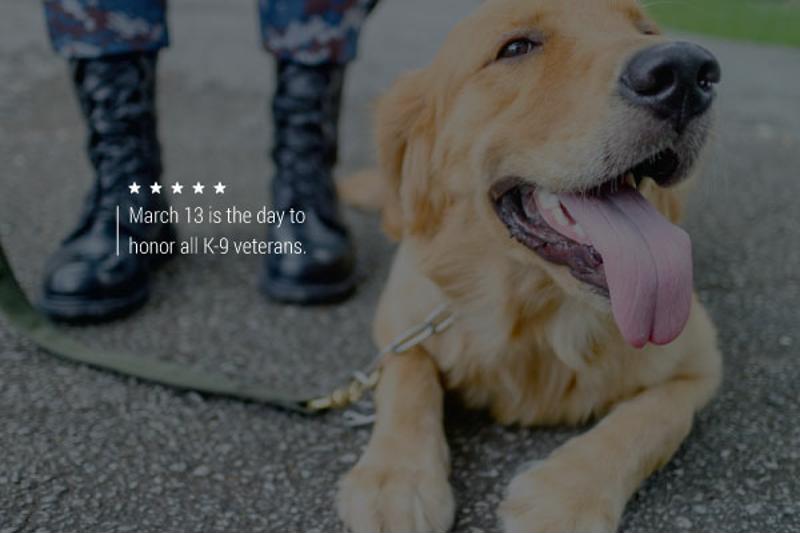Dogs are more than our best friends; they're also one of our greatest protectors. Nowhere is this statement more true than within the military and first responder groups across the country. Countless K-9 units of four-legged heroes have worked alongside human companions to protect American citizens.
Joe White, a retired working dog trainer, believed these animals deserved recognition. He advocated for March 13 to become an official holiday known as K-9 Veterans Day. Former Florida governor Charlie Crist agreed with White, making Florida the first state to acknowledge the holiday. According to the Defense Media Network, White was proud to see the dogs honored and sent Crist a heartfelt email.
"Dogs have served with honor throughout the history of our country's birth and growth, and have served at many jobs in all of our wars," White's email read. "They, too, served, bled and died for our freedom."
White is completely correct; the nations K-9s have done incredible things in the name of freedom. Join AFBA in celebrating K-9 Veterans Day by learning about the history of these courageous animals.

A brief history of trained service dogs
The U.S. Army first began training dogs for military purposes on March 13, 1942, as part of the War Dog Program, also known as the K-9 Corps. What started as nine trained dogs grew to more than 10,000 before the end of World War II.
Still, these were only the first official dogs to serve in combat. U.S. military forces used dogs in an unofficial capacity years before. One of the original and most famous was Sgt. Stubby, a stray terrier mix who was unofficially adopted by a soldier named Robert Conroy. Their bond grew so strong that Conroy and his fellow soldiers smuggled the dog onboard the SS Minnesota as the unit was deployed to Europe in October 1917. Although he was discovered, Stubby won the heart of Conroy's commanding officer with a well-timed salute.
Stubby initially served as the unit's mascot, providing emotional support to the soldiers. On February 5, 1918, however, Stubby displayed his bravery by following Conroy across a battlefield under constant fire. The unit soon realized Stubby could hear artillery and smell gas before either hit – a talent that kept soldiers safe and prevented the enemy from gaining the upper hand. Stubby even sniffed out a German spy wearing an American uniform. For his bravery, Stubby was promoted to sergeant, granted several medals and got to meet three First Ladies.
Sgt. Stubby may have been the first to be formally recognized, but he certainly wasn't the last. Smoky the Terrier served an important role during World War II. Found in a foxhole, Smoky became one of the first therapy dogs and visited injured soldiers. She also helped her owner's unit string communication wire across an old Japanese airfield. The area lacked telephone poles, and digging new trenches for the wires would have exposed them to the enemy. Instead, they used Smoky to pull the string through old pipes.
"You couldn't get a dog in a thousand to go through a dark tunnel like that that they'd never seen before," Cpl. Bill Wynne, Smoky's owner, told NPR. During the war, Wynne purchased Smoky from her original rescuer for six dollars. "But she was well-trained in obedience, and she did it because I asked her to. She trusted me."
K-9 units today
These days, K-9 units are some of the most revered servicemembers and first responders around. Yet many people wonder what happens after they've served their time. Although many die in combat, the 2016 National Defense Authorization Act allows retired military dogs to come home and gives their handlers first priority for adoptions. Similarly, many police canines are adopted out or retire to live with their handlers – a fitting, comfortable end to several years of service.


